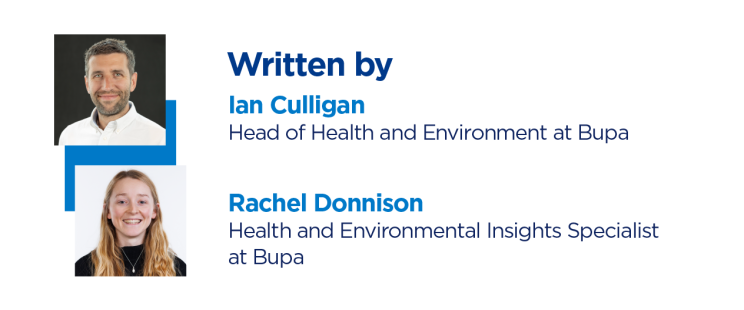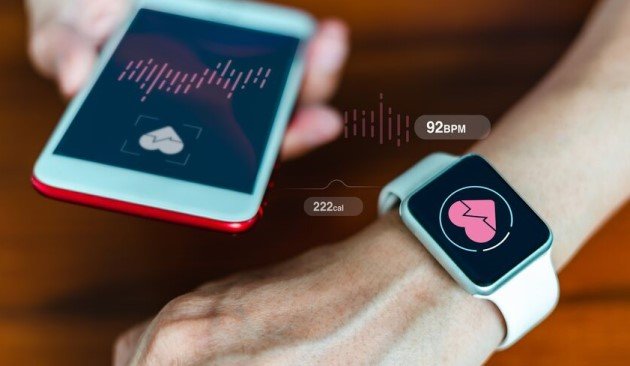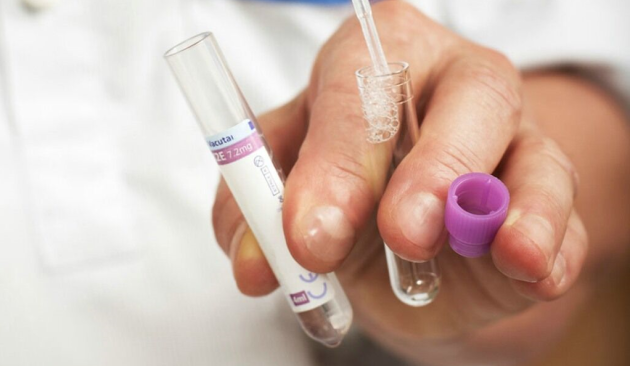
Single-use items (SUIs) have become a staple in healthcare, especially for infection control. However, the production, disposal and incineration of these materials is contributing to climate challenges, polluting ecosystems, destroying habits and having a serious impact on human health.
Every year the world produces around 400 million tonnes of plastic waste, with a staggering 79% ending up in our natural environment or landfills. SUIs, especially those made of plastics, make up a significant portion of healthcare waste. A UK NHS study found that just 15 products account for 69% of the total plastic used across healthcare’s supply chain. Among these, disposable items such as gloves, protective clothing, wipes and continence care products make up more than half.
But it’s not just about waste. Over 99% of plastic is made from fossil fuels, making SUIs a major driver of climate change. Plastics are making their way into our bodies too. Over 25% of the 16,000 chemicals used in plastics are potentially harmful to humans, yet it is estimated we unknowingly consume five grammes of plastic each week – that’s the equivalent weight of a credit card.
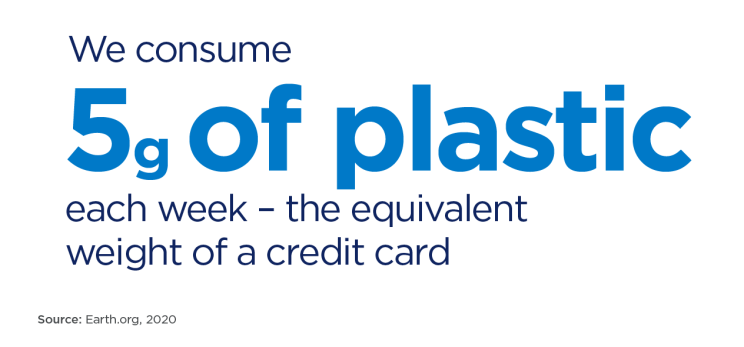
The good news is we can do something to overcome this challenge in the healthcare sector. While SUIs have an important role in many healthcare settings, there is an increasing number of reusable or more sustainable products that could help cut carbon emissions and reduce microplastics, without compromising clinical care.
The challenge: impacting people and planet
The sheer scale of SUIs in healthcare is staggering. In the UK, one dental procedure can use an average of 21 SUIs, while surgical procedures need between 30 and 64. From instrument trays and rinsing cups to medicine pots and gloves, all are used once and then thrown away.
This dependence on SUIs has led to a dramatic rise in waste in the healthcare sector. For example, in 2020, single-use surgical masks and isolation gowns in the US alone created the same carbon emissions as 78 coal-fired power plants.
Many plastics used in healthcare contain hazardous additives that can leach into the environment and harm human health. Microplastics have even been found in the placentas of unborn babies. Some plastics have been linked to conditions such as diabetes, obesity and even certain cancers. A study of 312 patients found microplastics in almost 60% of fatty deposits removed from their arteries – raising concerns about plastic’s role in heart disease.
The opportunity: transitioning to sustainable alternatives
Change is possible – and many hospitals and healthcare providers around the world are already proving it. By switching to reusables, using reprocessed products and embracing innovative materials, healthcare can cut carbon emissions and build more resilient supply chains.
Carbon reduction: Moving from SUIs to reusables can significantly cut emissions. One systematic review, for example, found that carbon footprints can be cut by up to 56% by making this change. Life cycle assessments show that remanufactured surgical items can lower global warming impact by about 50% compared to SUIs.
Enhanced resilience: By embracing circular models, healthcare systems can reduce reliance on long-distance shipments, making supply chains more resilient to extreme weather events and pandemics. During the COVID-19 pandemic, 66% of Belgian companies using circular techniques did not suffer any financial losses compared to only 2% of ‘non-circular’ companies.
The progress already being made
The shift away from single-use plastics is already happening, thanks to pioneering hospitals, organisations and manufacturers stepping up.
Research: Organisations like Practice Greenhealth and publications such as the Green Surgery Report and the MedTech Spotlight Report are paving the way through research and benchmarking.
Hospitals: Many hospitals are finding innovative solutions. For example, South West Healthcare in Australia replaced SUIs with more sustainable alternatives, avoiding sending 328,000 pieces of plastic medical waste to landfill.
Remanufacturing: Companies like Medsalv remanufacture single-use tourniquets, with Cabrini Health in Australia using over 3,500 of these items, cutting waste and saving costs. Stryker’s Sustainability Solutions diverted over five million pounds of waste from landfills and saved hospitals $238 million in 2023.
Reusable textiles: Revolution-ZERO also provides reusable medical textiles such as gowns and drapes, while St Michael’s Hospital in Cornwall, UK, uses a laundry system and reusable PPE to reduce waste by up to 99%.
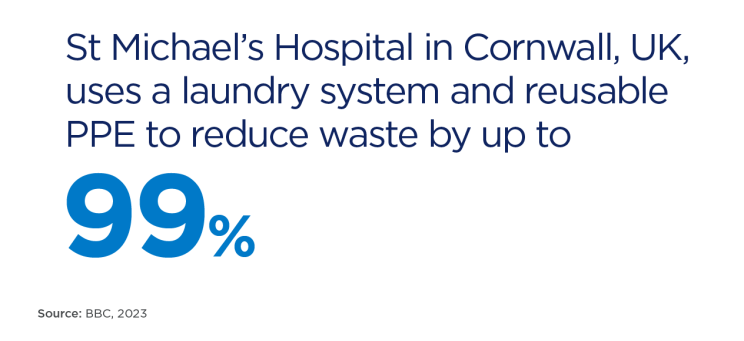
Innovative materials: Cassava Bags Australia makes compostable products from cassava plants, Upcycled Medical creates scrubs from waste plastic and PulPac has designed recyclable tablet blister packs made from dry-moulded fibre.
Bupa’s commitment: At Bupa, we have an ambition to reach net zero by 2040 and have partnered with Health Care Without Harm to cut emissions and reduce our environmental impact. Our Single-use Switch initiative aims to keep millions of items out of landfill each year by encouraging our healthcare facilities to replace SUIs with reusable alternatives.
The need for collective action
To truly tackle SUI pollution in healthcare, we need a united effort – hospitals, suppliers, policymakers and healthcare professionals all have a role to play. This includes sharing best practices, setting standards and updating frameworks for change.
As part of the transition, it’s also crucial to consider and manage the secondary impacts of switching to sustainable alternatives. For instance, sterilising reusable equipment with energy from non-renewable sources could actually result in a higher carbon footprint than using SUIs.
Thankfully, global networks and coalitions, some of which Bupa is part of, are already driving change. Health Care Without Harm’s Global Green and Healthy Hospitals network supports 70,000 hospitals and health centres in 80 countries. The Sustainable Markets Initiative’s Health Systems Task Force is bringing healthcare leaders together to speed up the shift to net zero.
There’s a lot of work ahead but whilst we understand this is a complex issue, the momentum is building. Transitioning away from SUIs in some clinical settings wouldn’t just mean short-term benefits for the environment – it would be a vital step towards a healthier, more sustainable future.
The healthcare sector has always been at the forefront of innovation, problem-solving and care. Now it’s time to apply that same mindset to tackling plastic pollution. By rethinking our reliance on SUIs, embracing sustainable alternatives and working together, we can protect both human health and the planet for generations to come.
